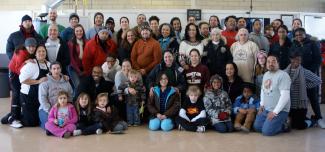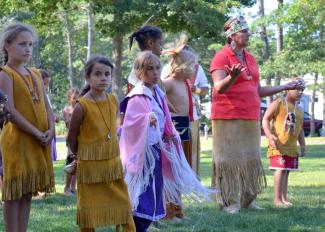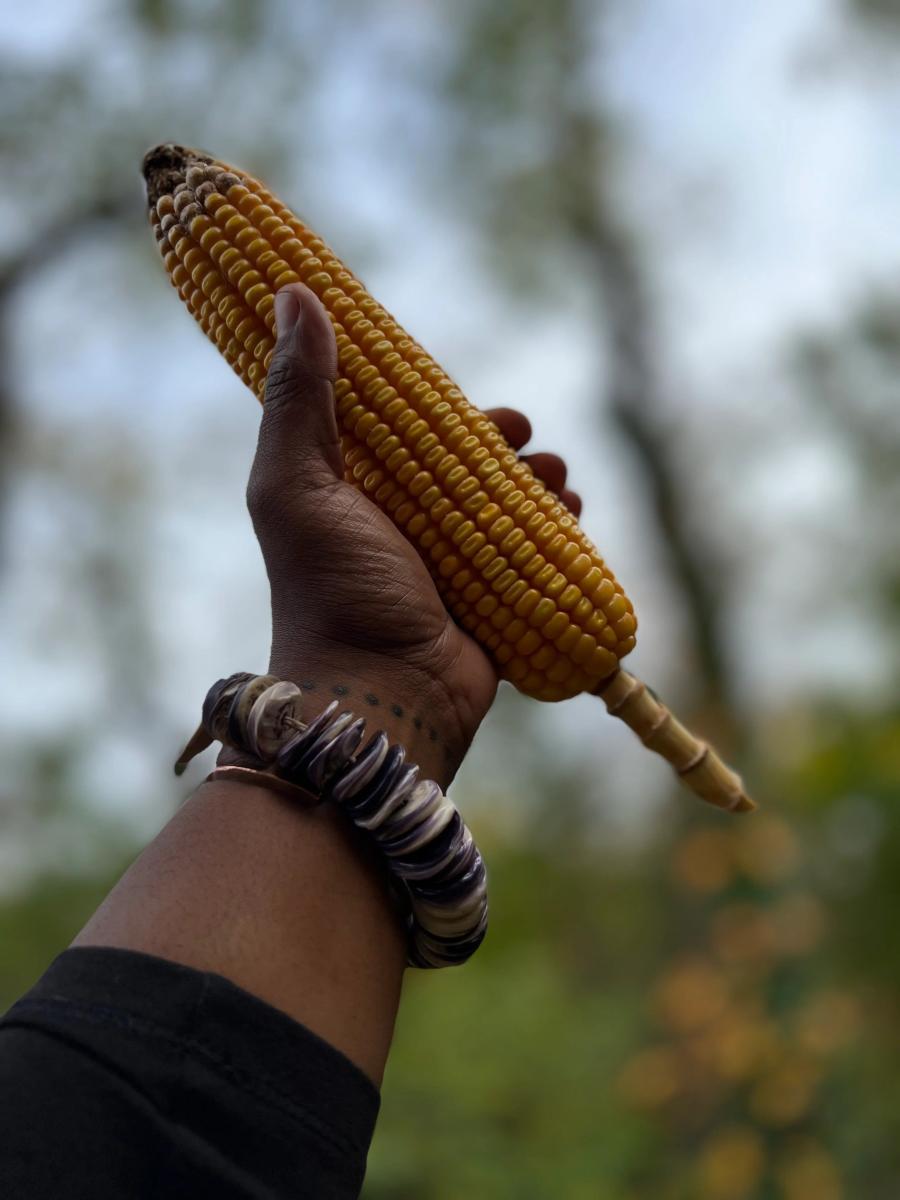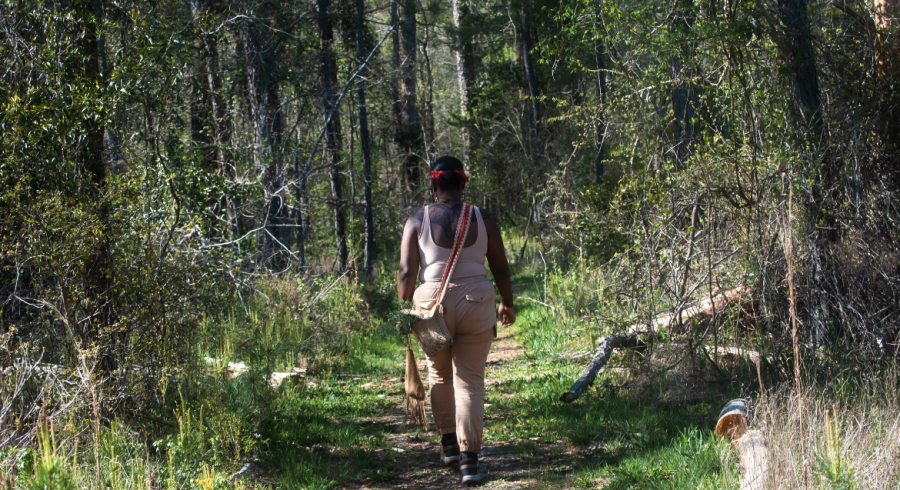
How can a dream inspire an entire nation’s language revitalization movement? If you ask jessie little doe baird of the Mashpee Wampanoag Tribe that question, she is quick to explain how in one of her dreams, her ancestors told her to “ask Wampanoag people if they would like language home again,” so in 1993, baird met with tribal elders, leaders, and community members who transformed her dreams into the Wampanoag Language Reclamation Project (WLRP). Thus three successive nights of dreams in a language she couldn’t then understand, became a vision widely embraced by the Wampanoag Nation in southeastern Massachusetts.
In 2008, Cultural Survival’s Endangered Languages Program began collaborating with WLRP to research and raise funds to support their efforts, and working with Makepeace Productions to create a PBS documentary film called We Still Live Here—Âs Nutayuneân, relating the remarkable story of the reawakening and return home of the Wampanaog language after many generations without first-language speakers.
The Wampanoag Nation includes the federally recognized Mashpee and Aquinnah Wampanoag Tribes, the state- and tribally-recognized Herring Pond, and Assonet Wampanoag communities, and smaller family bands, all of whom live on Cape Cod and the areas around Martha’s Vineyard. We Still Live Here explores how the awakening of this “sleeping” language evolved. In fall 2010, baird received an award from the MacArthur Foundation, popularly dubbed a “genius grant.” A week later, the tribe’s language project received a federal grant to implement a master-apprentice program with jessie as the master speaker to three full-time language apprentices, Nitana Hicks, Tracy Kelly, and Melanie Roderick, who share her long-term commitment to opening a tribal charter school. The school would teach all subjects in Wampanoag—modeled after the Native Hawaiian immersion school system.
In the midst of the whirlwind that accompanies public recognition and admiration, baird is decidedly humble and resolute—still closely focused on the day-to-day work that needs to be done to ensure the survival of her Indigenous language. For a language to be labeled endangered is a matter of degree. There are three key criteria that UNESCO scholars and linguists have refined to designate a language as being vulnerable to endangerment: 1) the numbers of speakers who are still living; 2) the average age of native and fluent speakers, and 3) the percentage of the youngest members of a community who have learned the language and can easily articulate it. More than half of the world’s 6,000–7,000 languages are threatened with extinction this century.
The importance and significance of all Indigenous languages cannot be emphasized enough. Languages encompass historical, linguistic, cultural, environmental, and spiritual distinctions that are valuable to all peoples. The decline of Indigenous languages is tragic in that important observationsconcerning biodiversity—and other human wisdom accrued over millennia—are lost as well. Information about the natural world and its storehouse of types of edible food, knowledge of weather and tidal movements, and scientific illumination about wildlife and insects could potentially become irretrievable. Neurolinguists and other researchers exploring cognitive development and human communication also lose priceless data offering insight into how the human brain functions.
By studying the morphology of a language, and its linguistic origins, research into how the brain constructs reality can be more fully understood. To quell the rapid and relentless disappearance of Indigenous languages, various methods have been used in conjunction with community efforts. One such methodology is the master-apprentice language immersion model. In this model, a master speaker pairs with an adult apprentice or a small team, and works intensively in the language with that person or group for 20–30 hours a week, across a given period of time. The language nest—an approach developed by the Maori and Native Hawaiians—is intergenerational with adults speaking the endangered language to preschool-age children in daycare classrooms and at home, even before reading and writing skills are taught. Perhaps the most successful models of language revitalization have been immersion or medium schools. These schools and programs educate primary, middle, and high school students via immersion classes conducted in the Indigenous language. Perhaps the most difficult method to implement is reclamation. This is how the Wampanoag language was given new life. Reclamation, however, is difficult to implement unless the language has been extremely well-documented. Still, even with that benefit, a linguistic researcher must cross-reference with closely related spoken languages and cull through extensive written material.
Wampanoag is just one of more than three dozen languages that branch out from the tree that encompasses the Algonquian language family. Because it has been studied by religious scholars and linguists for centuries, and is closely related to languages like Blackfeet, Cree, Ojibwe, Passamaquoddy, and Sauk that are still spoken by tribes spanning from Canada into Montana and Oklahoma, it was possible for WLRP’s linguistic team to determine rules of grammar, vocabulary, and pronunciation.
The WLRP’s Master Apprentice Program stands out even among Cultural Survival’s network of more than 300 Indigenous language programs in the United States, and is one of 12 communities selected to be featured on OurMotherTongues.org the companion website to We Still Live Here—Âs Nutayuneân that explores language revitalization in Indian country. The 12 tribal language communties include: Cherokee, Sauk, Mohawk, Wampanoag, Salish, Crow, Navajo, Yuchi, Alutiiq, Dakota, Lakota, and Ojibwe.
Though baird initially helped to spearhead the miraculous revitalization of the Wampanoag language, there are many people who appear in We Still Live Here who have been integral to the sustaining and building upon the successes of the Wampanoag Language Reclamation Project. Baird reaches out to any and every willing Wampanoag person—ages 2 to 92—who is ready to participate and learn Wôpanâôt8âôk (Wampanoag Language). WLRP has developed five Wampanoag grammar workbooks that are accessible to the lay-person, each accompanied by a CD or MP3 file so students can practice when they’re not in a structured classroom. WLRP linguists, teachers, and volunteers have also created a dictionary, coloring and storybooks for children, board games, organized immersion camps, and offered innumerable community classes.
A Wampanoag prophecy once related that during the seventh generation (which includes baird’s daughter who is the first native speaker of Wampanoag in more than a century), the language would return home to the people. The prophecy is today a reality due to determined efforts by Wampanoag people. Simon Ortiz (Acoma Pueblo) whose language is Keres, has said, “When we speak, we use language conceptually. We can’t be glib with our language. We cannot throw the beloved away.” For jessie little doe baird, Nitana Hicks, Tracy Kelly, and Melanie Roderick, and all Indigenous Peoples striving to renew usage of their ancient mother tongues, this observation resonates.
To access information about the 12 tribal language programs, and to meet speakers, teachers, students, and advocates for their language revitalization efforts, go to: OurMotherTongues.org.
To learn more about the Makepeace Productions andPBS/ITVS film, We Still Live Here—Âs Nutayuneân,watch clips, and to download a discussion guide edited by Cultural Survival’s Endangered Languages Program visit: http://www.itvs.org/films/we-still-live-here/engagement-resources




